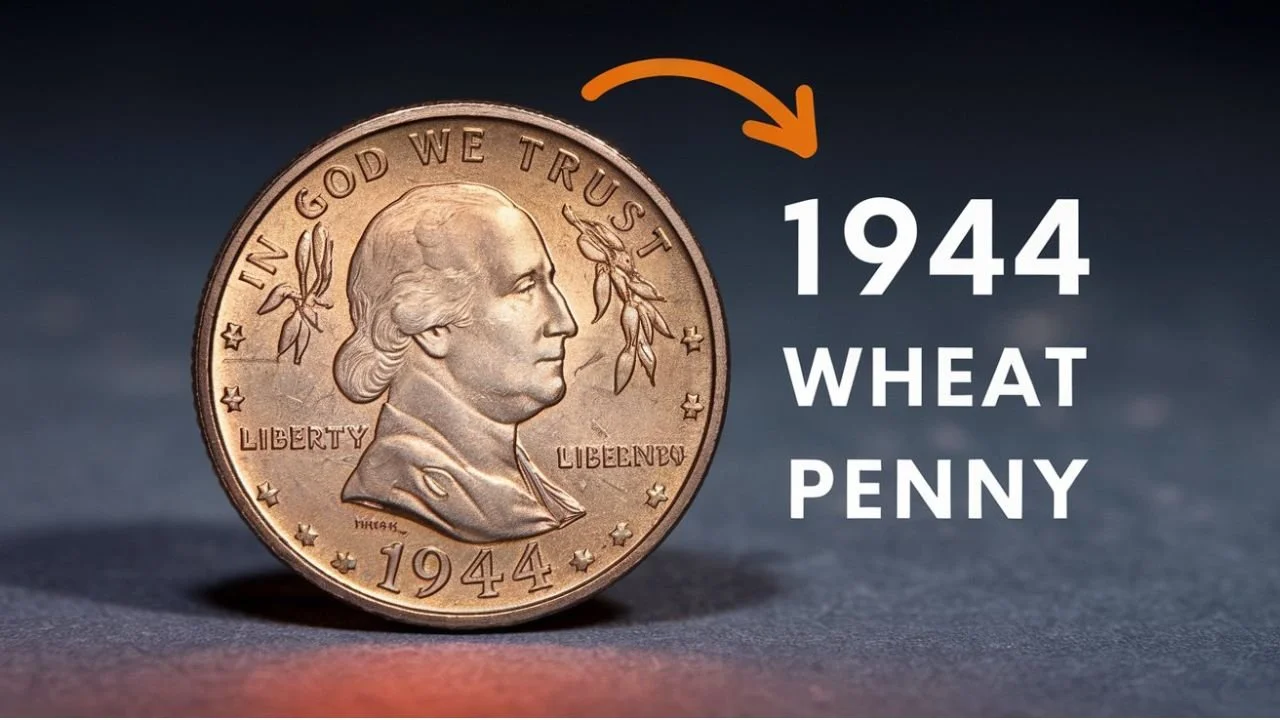The Lincoln Wheat Penny Valued at $5.1 Million, Still in Circulation?
In the world of coin collecting, surprises never seem to end. One such surprise is the famous Lincoln Wheat Penny, which has become a hot topic after one of these small copper coins was recently valued at an astonishing $5.1 million. What makes this penny so special? Even more shocking—coins like this could still be out there, quietly changing hands in regular transactions.
Let’s dive into the story of this rare coin, what makes it so valuable, and how you might just have one hiding in your pocket.
A Penny Worth Millions
At first glance, a penny doesn’t seem like much. It’s something people often ignore or toss in a jar. But the Lincoln Wheat Penny is no ordinary coin. First introduced in 1909, this penny features President Abraham Lincoln on one side and two wheat ears on the back. These were minted until 1958, when the design was replaced with the Lincoln Memorial.
Collectors and historians admire the Lincoln Wheat Penny for its historical significance and unique features. But out of the millions produced, only a few have the qualities that make them worth millions.
How Can a Penny Be Worth $5.1 Million?
You might wonder how a coin with a face value of one cent could reach such a high price. It all comes down to rarity, condition, errors, and demand.
The specific coin valued at $5.1 million is believed to be a rare error coin or a special mint version. In some cases, pennies from certain years, like 1943 (when most were made of steel due to wartime copper shortages), were mistakenly struck in copper. These are extremely rare and sought after by collectors.
Also, coins that are uncirculated or in perfect condition—known as “mint state”—can fetch a high price at auction.
Overview of the Lincoln Wheat Penny
Here’s a quick breakdown of key facts about the Lincoln Wheat Penny that collectors watch for:
| Feature | Details |
|---|---|
| Name | Lincoln Wheat Penny |
| First Minted Year | 1909 |
| Last Minted Year | 1958 |
| Material | Mostly Copper (some steel in 1943) |
| Designer | Victor David Brenner |
| Most Valuable Year(s) | 1909-S VDB, 1943 Copper Penny, 1922 No D |
| Value Range | $0.01 to $5.1 Million |
| Circulation Status | Still found in circulation, mostly older collections |
| Common Error Types | Double die, wrong metal, missing mint mark |
Why This Penny Is Still in Circulation
It may be hard to believe, but coins like these are sometimes still in circulation. That’s because not everyone recognizes their value. These old coins can get mixed in with regular change or found in family coin jars or boxes in attics.
Some people even unknowingly spend them at stores, not realizing they just handed over a tiny fortune. That’s why coin collectors often suggest checking every old penny you come across—especially those dated before 1959.
What to Look For In Your Change
If you’re curious about whether you might have a valuable Lincoln Wheat Penny, here are a few things to look for:
-
Date: Any penny minted between 1909 and 1958 could be a Wheat Penny.
-
Mint Marks: Check for mint marks like “S” (San Francisco) or missing marks. The 1909-S VDB is especially rare.
-
Material: Use a magnet on a 1943 penny. If it doesn’t stick, it might be the rare copper version.
-
Condition: The less wear, the better. Look for coins with sharp detail.
-
Errors: Look for strange features—double numbers, missing letters, or odd colors.
Protect Your Coins
If you find a Lincoln Wheat Penny that looks promising, do not clean it or try to make it shiny. Cleaning can actually lower the coin’s value. Instead, put it in a safe, soft place and consider showing it to a professional coin appraiser.
Collectors and experts can help determine the authenticity and value. You never know—it could be worth hundreds, thousands, or even millions.
FAQs About the Lincoln Wheat Penny
Q1: What is the rarest Lincoln Wheat Penny ever found?
A: The 1943 copper penny is considered one of the rarest. Only a few are known to exist, and they were made by mistake.
Q2: How can I tell if I have a valuable Wheat Penny?
A: Look for key dates like 1909-S VDB, 1943 copper, or 1922 no D. Errors, good condition, and missing mint marks also add value.
Q3: Are all Wheat Pennies valuable?
A: Not all. Many are worth only a few cents or dollars, but some rare versions can be extremely valuable.
Q4: Can I still find Lincoln Wheat Pennies in my spare change?
A: Yes! It’s rare, but it happens. People often overlook old pennies, and they sometimes get passed along without notice.
Q5: Where can I sell a rare penny if I find one?
A: You can contact coin dealers, auction houses, or online marketplaces that specialize in rare coins. Always get multiple opinions to ensure a fair price.
A Penny Can Change Your Life
It may sound like a fairy tale, but stories of people discovering valuable coins in old boxes, estate sales, or everyday change are real. The Lincoln Wheat Penny is more than just a piece of copper—it’s a piece of American history.
If you’re lucky enough to find one of the rare gems, it could be worth more than your car, your house, or even your yearly salary.
So next time you hear that familiar “clink” of change in your pocket or wallet, take a closer look. That plain-looking penny just might be worth a fortune.




